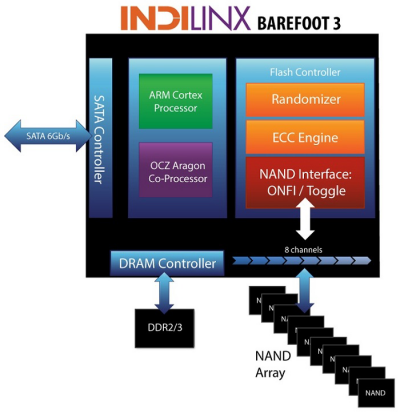

Model: AMD Radeon R7 240GB Solid State Drive
Manufacturer: OCZ Storage Solutions
Provided By: OCZ Storage Solutions
As one of the biggest names in the computer industry, Advanced Micro Devices (AMD) doesn't need much of an introduction. Founded in 1969, the company got its start by producing logic chips. As time went on, AMD expanded into the microprocessor market, serving first as a second source for Intel before introducing its own line of x86-compatible processors. Today, AMD is the world's second largest manufacturer of microprocessors. Along with a wide range of processors for the desktop and mobile markets, the company currently offers graphics cards, motherboard chipsets and memory kits.
AMD recently partnered with OCZ to launch the company's first solid state drive, the Radeon R7. Designed with gamers and graphics-hungry power users in mind, the Radeon R7 is based on OCZ's Indilinx-infused Barefoot 3 M00 controller. This cutting-edge controller is powered by both an ARM Cortex processor and OCZ's own Aragon co-processor and features an advanced, multi-level ECC engine, low write amplification, efficient garbage collection and adaptive flash management algorithms. The Radeon R7 is also equipped with up to 480GB of Toshiba's latest Advanced 19nm (A19) MLC NAND flash. Along with 30GB of host writes per day, the drive is capable of 550MB/s read and 530MB/s write speeds and a maximum of 90,000 4KB random write IOPS.

For this review, OCZ sent us the 240GB version of the Radeon R7. This SSD comes equipped with 512MB of on-board cache and is capable of delivering up to 550 MB/s sequential read and 530 MB/s sequential write speeds as well as up to 95,000 random read and 90,000 random write IOPS.
| AMD Radeon R7 240GB Solid State Drive | |||||||||||||||||||||||||||||||||||||||||||||||
General Specifications
Performance
Reliability
Power Consumption
Environmental
Dimensions and Weight
Other Features
|
Needless to say, this is only a taste of what the Radeon R7 has to offer. To give you an idea of what to expect, we'll take a closer look at AMD's new SSD and then see how well it performs. Does the Radeon R7 have what it takes? Can it deliver the performance and features that we've come to expect from AMD? Keep reading as we find out.

